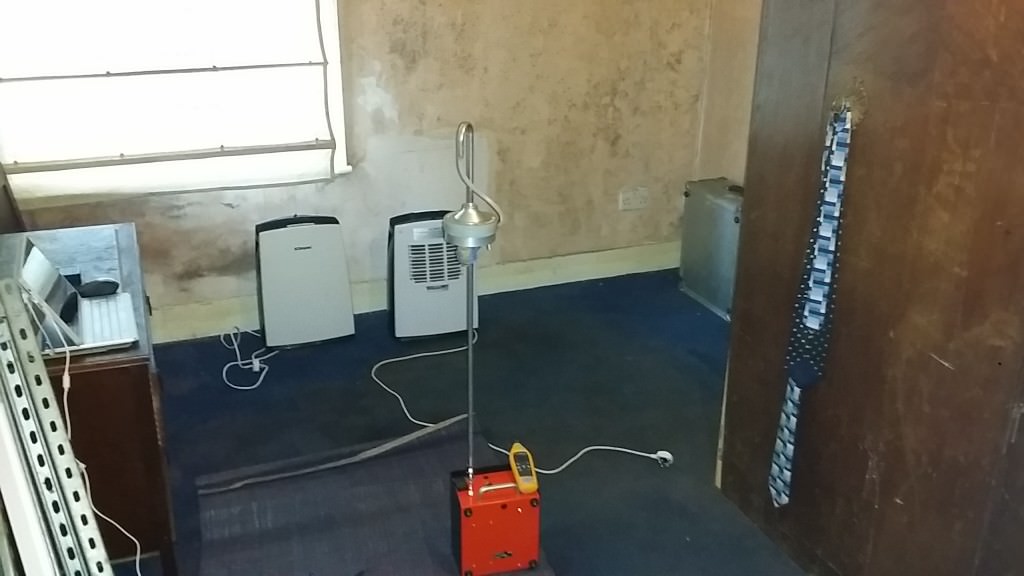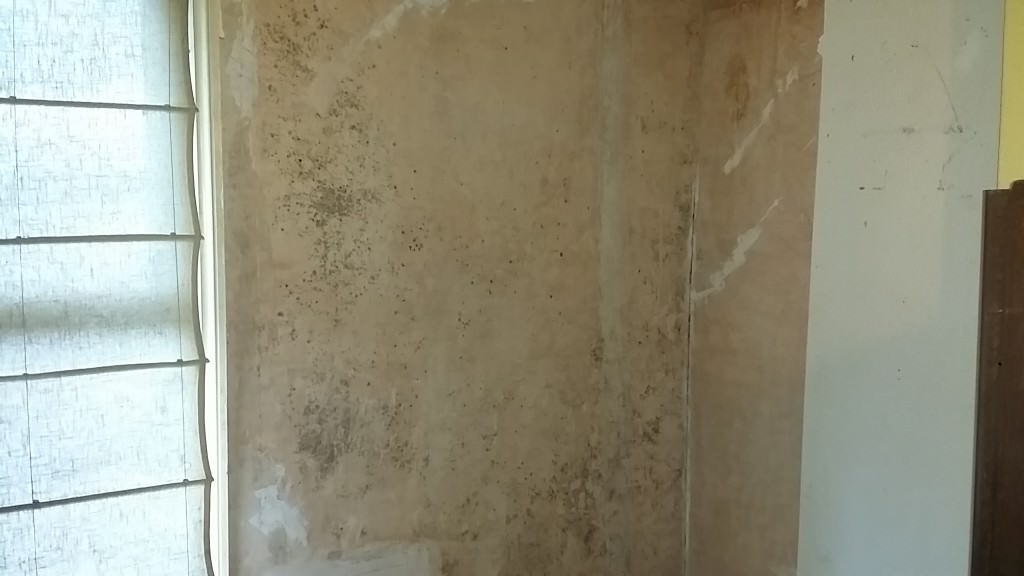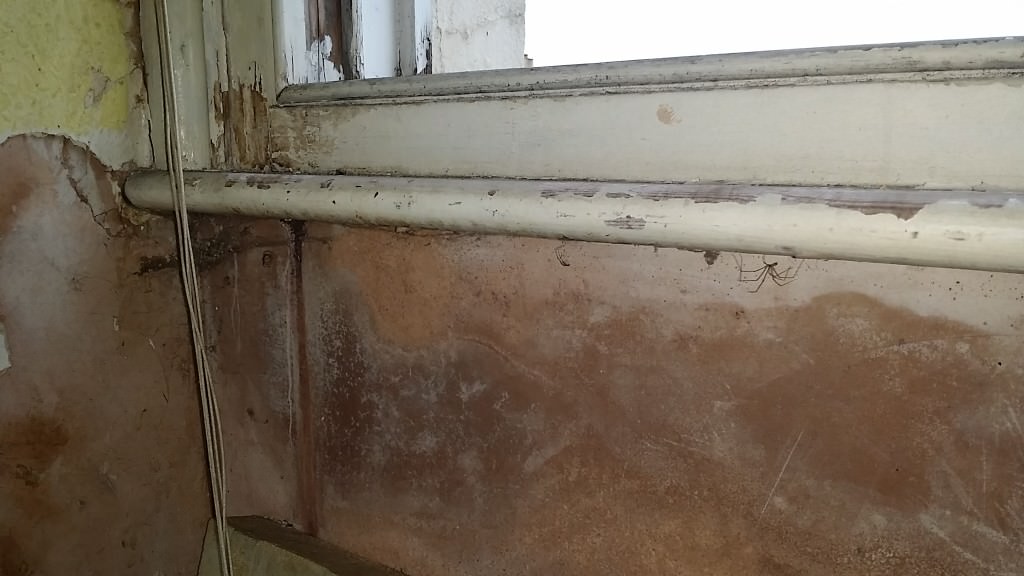Every person is entitled to decent and healthy living conditions. This is particularly true in rented accommodation where the landlords have a duty to ensure that their properties are fit for purpose and do not represent a health risk to their occupants. I have recently inspected a London apartment where the landlord seriously neglected his statutory duties toward the tenants. The apartment was situated in a terraced building divided into 5 apartments across three floors. The apartment under investigation consists of 2 bedrooms, living room, kitchen, bathroom and a central corridor. Windows in all rooms were traditional sash wooden frame windows with single glass pane.
The mould issues were confined to bedroom of the property where the external window wall and part of the ceiling showed presence of mould growth. The mould contamination to the room’s walls has been occasionally manually cleaned but was mostly left untreated.

The male occupant suffers from sinuses difficulties, skin irritation, blurred vision, nausea, fatigue, disturbed sleep and general respiratory problems. The gentleman has stated that his symptoms have rapidly improved when he was away from the property for longer periods of time. After returning to the property the adverse health symptoms have slowly returned.

Quantitative assessment of mould spore trap samples showed the overall concentration of airborne mould spores in the indoor areas was statistically lower or similar to the background concentration of mould spores in the atmosphere. The overall concentration of mould spores indoors ranged between 100 and 6500 counts per cubic meter. The average background concentration of mould spores was measured 6700 counts per cubic meter. Qualitatively the spore trap samples collected in the habitable areas of the property were dominated by Aspergillus/ Penicillium types of spores followed by Cladosporium spores and hyphal fragments representing respectively 54%, 11% and 12% average distribution in the collected samples. The collected background samples were dominated by basidiospores followed by ascospores and hyphal fragments representing respectively 87%, 7% and 5% average distribution.

Quantitative assessment of culturable mould samples shows that at the time of the assessment the overall concentration of viable mould spores in the indoor environment was similar in comparison with the background environmental samples. The overall concentration of viable mould spore samples indoors ranged exceeded 3000 colony forming units per cubic meter. The average background concentration of culturable mould spores in the atmosphere at the time of the assessment was 3800 colony forming units per cubic meter. Qualitatively the indoor viable samples were dominated by Cladosporium moulds followed by Penicillium moulds with minor presence of Alternaria, Paecilomyces and Fusarium. The collected background samples were dominated by Yeast followed by unidentified micromycetes and Cladosporium moulds.
The surface samples collected from the visible fungal contamination on various surfaces within the property show presence of mainly Alternaria and Chaetomium moulds.

Moisture investigation revealed that the bedroom of the property was suffering from significant water damage due to water penetration through the window structure. The wooden window in this room showed significant material deterioration and fungal rot. The wall immediately underneath the window was saturated with water and acted as a primary source of high humidity in the room. The high humidity in the room caused water condensation on poorly insulate sections of walls and ceiling thus creating favourable conditions for fungal growth.

Based on the results of moisture mapping, visual observation and microbiological sampling and identification it is my opinion that the most likely reason for adverse health symptoms experienced by the occupants was continuous and long term exposure to allergenic and pathogenic mould genera.

It was also my opinion that the bedroom of the property was inhabitable and required immediate remediation. The remediation needs to involve repairs and most likely replacement of the bedroom window, thorough drying of all the walls and removal of the existing fungal contamination from all the surfaces. Contaminated materials such as decorative wall paper should be removed as adequate cleaning of such highly porous material is not achievable.
By Tomas Gabor
